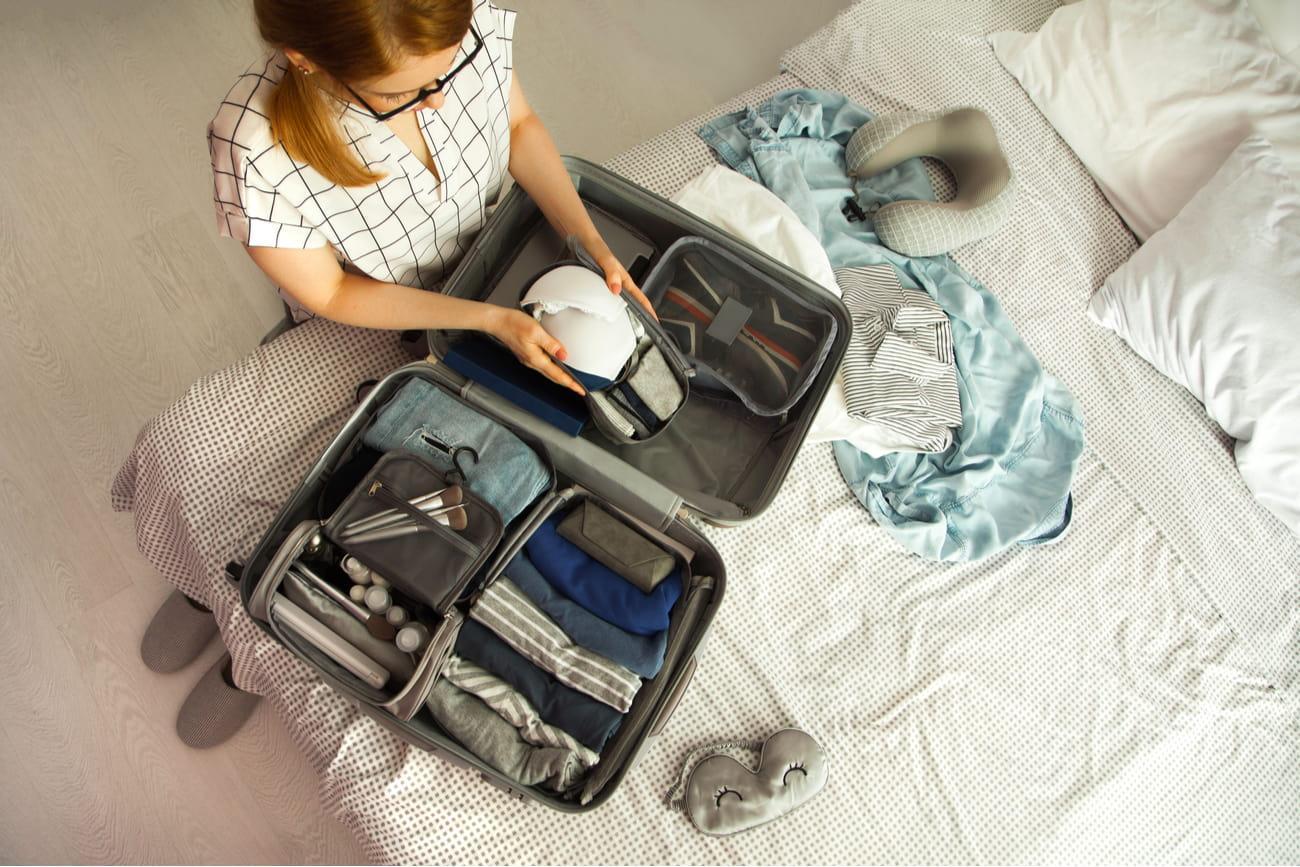Who doesn’t want to travel? If you’re planning a trip overseas, check out this checklist of items you should prep in advance! Everything from what you need way ahead of time, documents, carry on bag checklist and more.
Who doesn’t like travelling? Being on vacation? Experiencing a new culture, language and food? In the midst of the excitement that comes with it, it’s easy to forget about an essential travel item or feeling like your mind goes blank when it comes to packing your bag.
But fear not! We have prepared an international travel checklist with all the essential items you should look for, prep and pack. Ready for it?
Here’s an overview of our international travel checklist. We’ll get into more detail about each item later.
- Travel plans
- Passport and visa
- Cash, debit and credit cards
- Travel insurance
- Carry on items
- Checked bag accessories
- Suitcase items
Now, let’s do this!
International travel checklist
What you need to prep in advance for your international trip
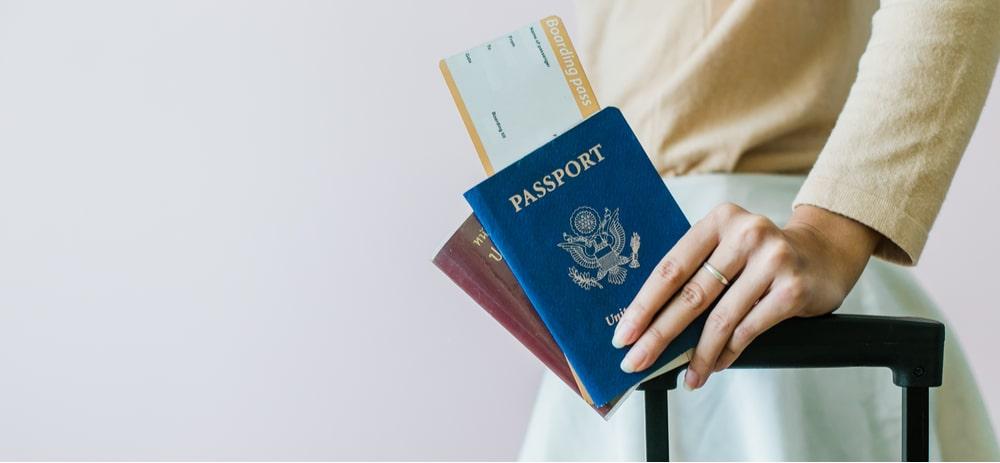
1. Destination and travel plans
First things first: where are you going? What do you want to visit? This is the first step to plan the rest of your trip, of course, as it will also help you figure out what sort of transportation you’ll need, where and for how long you’ll have to book hotels/rooms and all of that.
With a country and city (or cities) in mind, there are two ways to deal with this: research the place thoroughly or go with your instincts. There are advantages and disadvantages of both and you’ll have to choose according to your travel style.
Many travellers find that this “hunt for information” phase takes a little bit of the magic of knowing a new place away — as, by the time you arrive, you’ll probably have seen at the very least pictures of the main attractions, made up a list of thing you shouldn’t miss in the city and more. But, if on the one hand you’ll know maybe a bit too much, you’ll also know of places you wouldn’t want to miss — and there’s nothing more frustrating than finding out about a perfect spot after you’ve come home.
Whether you choose to go one way or the other, having a general idea of how many days you’ll be spending at each city is something you should do anyways. This is the part where you’ll start looking for ways to get from one place to the other by car, bus or train — and booking any of those in advance will always be the best choice, as there’s a higher chance that you’ll find cheaper prices and offers.
2. Get your documents in order
For international travel, you won’t even be able to leave your home country if your passport and visa (if required) are not in order.
For the passport, you should apply many months in advance as this process may take a while. If you already have one, look for information about how many months it will have to be valid after going back to your home country. Europe, for example, requires that passports are valid for a minimum of six months after you’ve returned home.
For visas, first check if your destination even requires one. Some countries do, while others only require a visa on arrival — which means you can “buy” your visa on arrival at the airport. If you can, even when this is possible, it’s always best to apply for a visa before you travel as you won’t have to worry about this after a long flight.
Another thing that is often forgotten about is the International Driver’s Permit (or IDP), which is basically your driver’s license, but translated into many languages (including English). Not all, but most of the common tourist destinations require that you have one to drive around if you’re planning to rent a car, for example. Even if the rental company doesn’t specifically ask for it at the counter, it’s always safe to carry your IDP with you.
3. Travel insurance
Safety always comes first. Travel insurance is sometimes forgotten or not even thought about, as some countries do not require that you have travel insurance when you enter their territory.
However, if an emergency happens, it’s known that overseas medical facilities only accept cash and payment up front and sometimes free healthcare isn’t available. In that case, having travel insurance is really the thing that’s going to save you — or, at least, save your wallet. As with any type of insurance, we buy it without any intention of needing it. But it’s always best to be safe than sorry, right?
Some travel insurances also cover all sorts of different possible vacation headaches, such as stolen or lost luggage, drugstore expenses, emergency return trip home and more. The best thing you can do is to compare a few options and find the one that fits your trip and budget the best.
4. Vaccines
When traveling to other parts of the world, you may be exposed to illnesses you didn’t even know existed. For that, vaccines are recommended — and sometimes even required — when you visit a foreign country.
We recommend you check to see if the place you’re visiting requires or advises that tourists get shots before their vacation. And do so in advance, as vaccines generally take up to a few weeks to actually build immunity.
5. Money
We all need money to travel, but the thing is your dollar bills will probably not be enough. While some people just exchange money, others go with travel money cards for the safety of it — compare and choose whatever option fits you best!
Apart from that, you can also use your credit or debit cards, but don’t forget to get in touch with the bank to let them know you’re going on vacation! Purchases in a currency and location not usual to you might trigger the security systems and temporarily block your card. To avoid that, contact the bank a few days in advance.
6. International phone plans
Let’s be honest, we all want to stay connected no matter our location! This isn’t just useful to keep your friends and family up to date on social media, but also to get directions to a place, book a table at a restaurant and much more.
For that, you can check with your provider if your phone will work in the area you’re going to or ask about international phone plans. Those are sometimes quite expensive, so an alternative is to get a prepaid SIM card beforehand or buy one once you get to your destination.
7. Clean up your shoes and wash your clothes
People don’t usually care about this until they start packing and realize their favorite shirt is not clean.
Washing your clothes and cleaning up your shoes ahead of time will make the packing process so much easier! In this way, you don’t have to rush to wash or clean something last minute.
8. Buy small sized containers for your personal care products
When you’re on vacation for a week, two or even three, carrying full-sized products with you is a little bit too much. Most of the time, you won’t use all of that and you have no idea of how much space these products take inside your bag if you add them up.
One bottle of shampoo is usually fine, but add conditioner, hair gel and a moisturizer to that!
If you can, the best option is to always carry small or travel size items with you. If the travel size version is too expensive (it is usually not worth it comparing to the full size), you can choose to buy smaller or travel size containers and transfer the contents from one to another.
Must have carry on items for your international trip
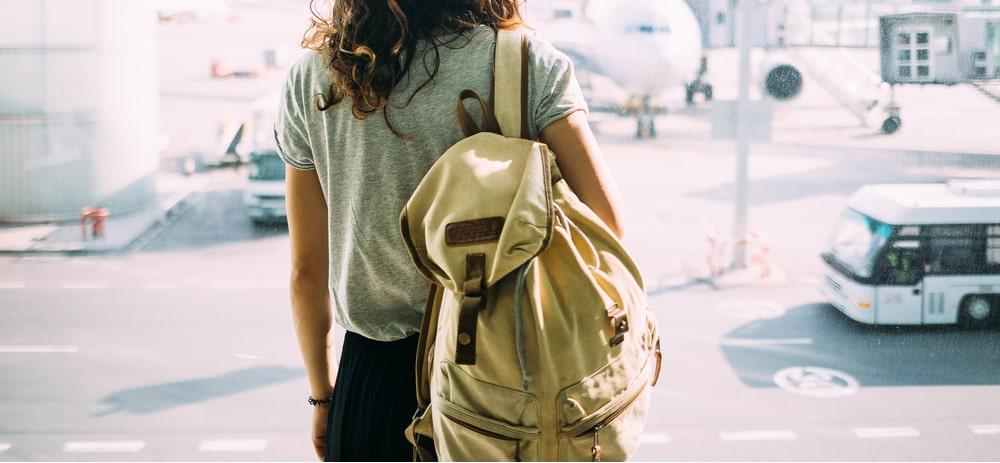
Well, we all know this is going to be a long (sometimes very long) flight, so we must be prepared. Carry on items are very personal, but here’s a list of things you should at least consider.
1. Passport, visa and other documents
First thing you should place inside your carry on bag is your personal documents. You can forget to pack your favorite hat, your sunglasses, and even your phone — but you can’t forget your documents.
As we’ve mentioned before, you won’t even be able to set foot in the airplane if you don’t have your passport and visa (if it is required to enter your destination country). Check many times before you leave your home if you have to!
While we’re in the topic of important documents, you may also be asked to fill out customs forms while still inside the airplane. For that, we suggest you also pack a simple black or blue pen.
2. Vouchers
For everything you bought in advance, and that includes booking confirmations, tickets to attractions and more, the company responsible for those probably sent a voucher to your email.
While printing them is not really necessary, we would advise you to at least consider it. We all keep copies online, but what if an internet connection isn’t available? Even if you save the file on your phone, it can still run out of battery, so we recommend that you have physical copies of the most important ones.
3. Valuables and cash
Most airlines recommend you always carry money and valuable items, such as jewelry, with you. This is the safest option as there’s no risk of your carry on bag being lost, right?
Just pack your goods nicely in a corner of your carry on! If you’re still worried about their safety, add a locker to your carry on bag and you’re good to go.
4. Small bag of toiletries
This is also a must. To keep yourself feeling reshered and somewhat clean in between connections, having a small bag of toiletries may save your life.
Here’s what we recommend you have inside the bag:
- Toothbrush, toothpaste and floss
- Soap or face/body wash
- Wipes and wet wipes (for cleaning surfaces or your hands when there’s no water)
- Hand sanitizer
- Hand, face, body and/or lip moisturizers (airplanes are particularly dry places)
- Deodorant
- Hair brush or comb
- Medication for headaches, nausea etc.
- Sleeping mask (if you have trouble sleeping when it’s not completely dark)
Special items include sunscreen and bug spray — which can be added depending on your destination — and makeup to look a bit more put together if you want to.
5. Change of clothes
What if there’s an accident involving your white t-shirt and ketchup? Carrying a change of clothes is always a good idea as you probably won’t have access to your checked bag for most of your trip.
Also, still in the clothing section of your carry on, there are very few things in the world that are as uncomfortable as being stuck inside an airplane for hours on end. To make the experience more bearable, we recommend packing a clothing item that is comfortable to you. This will usually be a scarf, sweater or hoodie.
In addition to keeping you warm throughout the flight, they’ll definitely be a source of comfort and help you relax if you’re a bit anxious about flying.
6. Your favorite electronic devices
Even if the aircraft has a good entertainment system, nothing beats having your own electronic devices for your enjoyment. With a long flight comes long hours of boredom to defeat, so downloading a season of a TV series or a few movies should be a good thing.
Here’s a list of electronic devices you’ll probably need during the flight or trip:
- Mobile phone (of course!)
- Laptop
- Tablet
- E-reader
- Digital camera (or a film camera if you have one)
- Headphone or earphone
Also worth mentioning: you can’t use most of that if you can’t charge them! When traveling abroad, be sure to pack a universal plug adapter and all the chargers!
Checked bag accessories
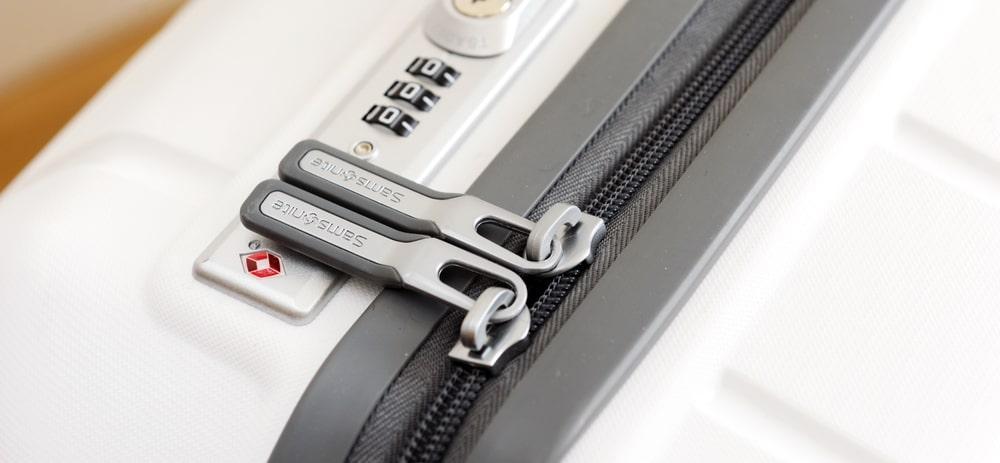
When it comes to your checked bag, there are a few optional items and a few not so optional ones.
A tag with your name on it, for example, is a good addition. Although not mandatory (your bag will be labeled by the airline when you check-in), it’s nice to have this information just to be safe.
Also related to safety, securing your checked bag with a lock is always the best option. Although not required, a TSA approved lock is the usual recommendation, as the TSA has a special key to open it if your bag needs to be searched. If you choose not to buy a TSA lock and they have to look through your bag, your lock will be cut off.
Now, for something that is completely optional: a scale. With weight restrictions for checked bags and a high price for exceeding them, a scale may be a good friend when you’re packing your bag — specially when it’s time to go back home.
Packing for international travel
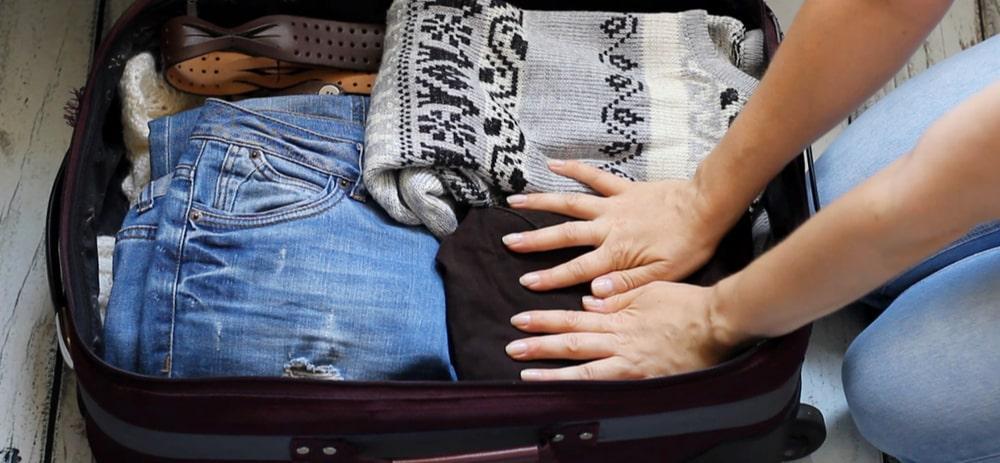
When packing for an overseas trip, you need to be strategic. There isn’t much more to be added than clothes and shoes according to the season, but some tips may make it easier. If you’re committed to it, how about watching a video on how to fold the clothes and organize the remaining items in the best way possible?
Generally, we would advise you to pack very comfortable and light clothes — if you can and the weather allows it — to make your bag as lightweight as possible. If you followed our tip of washing and cleaning everything in advance, this will already be a much easier task.
Here are a few items that are sometimes forgotten:
- Beauty and grooming items (nail clippers, cotton balls/pads, cotton swabs etc.)
- Hats and hair accessories (very important if you’re going to a sunny place!)
- Umbrella and/or rain coat
- Laundry bag
Wrapping up
That’s it for out international travel checklist! If you have a must-pack item and you don’t see it here, let us know and help others make their prep process easier 🙂
Remember that if you’re thinking about renting a car for your trip, Rentcars.com compares and finds the best prices between more than a hundred rental companies all over the world. Count on us to make your travel experience even better!


